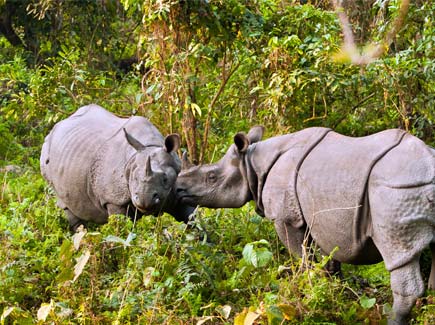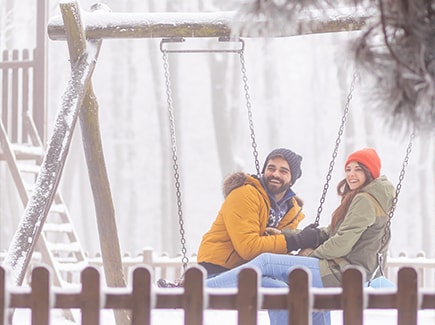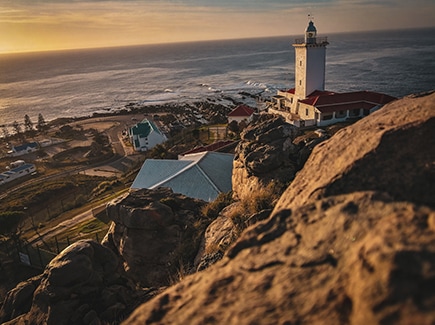Eastern Europe remains a region that fascinates and invites exploration, promising each visitor a rich and varied experience. This only means a massive bucket list.
Published in the Sunday Indian Express Magazine - Eye on 07 April, 2024
Today, I wanted to talk about Europe. Do you know how many countries there are in Europe? Depending on where you look, this number could be different. Some sources will tell you that Europe has 44 countries, while others may tell you that Europe has 50 or 51 countries. For me, the United Nations’ website is the best source, so as per the count of the United Nations, there are 44 countries in Europe.
So where does the number 50 or 51 come from? Not included in the list of 44, are several countries including Turkey, Kazakhstan, and Russia, because these are transcontinental countries with some parts being in Asia, while some are in Europe. To list the others: Cyprus, an island in the Mediterranean Sea, which is geographically part of Asia Minor (Middle East). The Faroe Islands, an island group between the Norwegian Sea and the North Atlantic Ocean, a self - governing territory of the Kingdom of Denmark. Greenland, which geographically belongs to North America, also is an autonomous Danish territory. And Kosovo, which is a partially recognised state in the Balkans. Now that we have answered this question, I want to answer a simple question today: What really is Eastern Europe?
To put it briefly, Eastern Europe is a fascinating region. It stretches from the Baltic Sea in the north to the Balkans in the south, and from the banks of the Danube River to the vastness of the Russian steppes. Its diverse heritage is shaped by numerous factors, including its geographical boundaries, historical empires, and the intermingling of different ethnic groups. The history of Eastern Europe is marked by the rise and fall of empires, such as the Byzantine Empire, the Ottoman Empire, and the Austro-Hungarian Empire, each leaving its imprint on the region's cultural and architectural heritage. And if we are to talk about which countries are part of Eastern Europe, here’s the list:
Albania 🇦🇱, Belarus 🇧🇾, Bosnia and Herzegovina 🇧🇦, Bulgaria 🇧🇬, Croatia 🇭🇷, Czech Republic 🇨🇿, Hungary 🇭🇺, Moldova 🇲🇩, Montenegro 🇲🇪, North Macedonia 🇲🇰, Poland 🇵🇱, Romania 🇷🇴, Serbia 🇷🇸, Slovakia 🇸🇰, Slovenia 🇸🇮 Ukraine 🇺🇦 and the three Baltic States: Estonia 🇪🇪, Latvia 🇱🇻, Lithuania 🇱🇹.
With so many countries, the region is home to a multitude of ethnic groups, including Russians, Ukrainians, Poles, Hungarians, Romanians, Bulgarians, and many others, each with their unique customs, languages, and folklore. This diversity is reflected in the region's culinary traditions, music, dance, and festivals, offering visitors a chance to immerse themselves in a wide array of cultural experiences.
From the cobblestone alleys of Prague to the bustling markets of Budapest, from the historical streets of Krakow and the thermal baths of Budapest to the serene beauty of the Carpathian mountains and the lively beaches of the Black Sea coast, Eastern Europe remains a region that fascinates and invites exploration, promising each visitor a rich and varied experience. This only means there are many places to add to your bucket list. Now if that is the case, I thought, why not leave you with my top bucket list for Eastern Europe? Here it goes:
Prague, Czech Republic: Known as ‘The City of a Hundred Spires’, Prague boasts stunning Gothic architecture, the historic Prague Castle, and the Charles Bridge, offering a window into medieval Europe.
Budapest, Hungary: The capital city, split by the Danube River, is famous for its thermal baths, the grandeur of the Hungarian Parliament Building, and the historic Buda Castle, illustrating the city's rich Austro-Hungarian heritage.
Dubrovnik, Croatia: Known as the ‘Pearl of the Adriatic’, Dubrovnik's stunning seaside fortress walls and ancient city streets were famously featured in ‘Game of Thrones’, attracting fans and tourists from all around the world.
Plitvice Lakes National Park, Croatia: A natural wonder, featuring 16 terraced lakes interconnected by waterfalls, surrounded by deep woodlands home to diverse wildlife.
Tallinn, Estonia: The capital city, known for its preserved Old Town, offers a mix of cobblestone streets, colourful buildings, and tech-savvy modernity, reflecting Estonia's rapid development.
Sofia, Bulgaria: Lying at the foot of Vitosha Mountain, Sofia is one of Europe's oldest cities, where ancient Serdica ruins meet Soviet architecture and a fast-paced glowing nightlife scene.
Vilnius, Lithuania: The baroque beauty of Vilnius is showcased in its Old Town, one of the largest surviving medieval old towns in Northern Europe, dotted with artistic cafes and historical sites.
Belgrade, Serbia: A city that never sleeps, Belgrade is famous for its fortress at the confluence of the Danube and Sava rivers, vibrant nightlife, and rich history dating back to Celtic times.
Sarajevo, Bosnia and Herzegovina: Often called the ‘Jerusalem of Europe’ due to its historical religious diversity, Sarajevo enchants visitors with its Ottoman influences, bustling bazaars, and warm, welcoming culture.
Each of these cities is just the beginning. With 18+ countries, each place you visit in Eastern Europe is going to leave you in awe. So whether you choose to do it all in one trip, or do multiple trips, as always, I can only guarantee you one thing, you will celebrate life, period! That’s all about Eastern Europe from me. Let’s now shift our attention to our new segment.
Travel Tip of the Week
In the modern era of travelling, the first thing many of us do upon arriving at our destination is not to check our hotel room or unpack. Instead, we rush to connect to the local Wi-Fi. The advent of the smartphone has dramatically reshaped our priorities. Now, we are all eager to capture every moment, sharing our experiences on Instagram through vibrant reels and photos. The convenience of widespread free Wi-Fi has largely replaced the older practice of purchasing local SIM cards for internet access. Interestingly, our choices of cafes or restaurants while travelling are now shaped more by the availability of free Wi-Fi than the actual quality of the food. Whether you agree or not, this in my opinion is the reality of today! However, this shift brings with it significant security risks that all travellers should be aware of.
Public Wi-Fi networks, often lacking in strong security measures, have become a playground for tech-savvy scammers. These individuals exploit the networks to gain unauthorised access to personal information. A prevalent method used by these scammers is the ‘evil twin’ hack, where a malicious Wi-Fi network is set up to mimic a legitimate one. Unsuspecting users connect to these networks, inadvertently granting hackers access to personal data, including social media accounts, login credentials, and more.
Another technique employed by hackers is the ‘man in the middle’ attack, positioning themselves between the user and the Wi-Fi connection to intercept data. These breaches can lead to the theft of passwords, credit card information, and other sensitive data. Given the common practice of saving passwords and payment details on devices, such breaches nowadays have become even more common and can have devastating consequences.
In spite of these risks, I know that avoiding public Wi-Fi altogether is not the solution. But, the least we can do, is exercise caution. Travellers like you and me, can adopt several measures to protect ourselves. Secure Wi-Fi networks typically require a password for access. Be wary of networks that don't, as they likely lack proper security. Additionally, avoid networks with generic names like ‘free public Wi-Fi’ and be cautious of connections that request payment information, as these could be traps set by scammers.
Asking staff for the official Wi-Fi network name in places offering free access, avoiding online banking or transactions over public Wi-Fi, and using different passwords for different accounts are just some of the things that I would recommend.
So all in all, while the allure of free Wi-Fi is undeniable, it's crucial to navigate these networks with caution. By taking the necessary precautions, all of us can enjoy the benefits of connectivity without compromising our personal security. That’s it for today then, if you liked reading this, remember to checkout our podcasts: Travel Explore Celebrate Life, 5 Minute Travel Tips and Know the Unknown on Spotify, JioSaavn and Apple Podcasts. Until next time, keep celebrating life!

























































Post your Comment
Please let us know your thoughts on this story by leaving a comment.